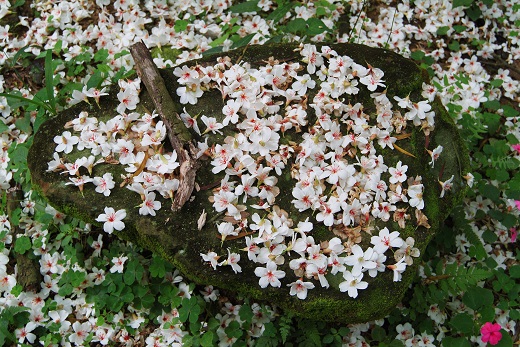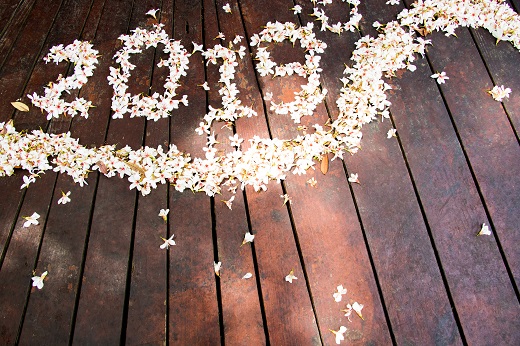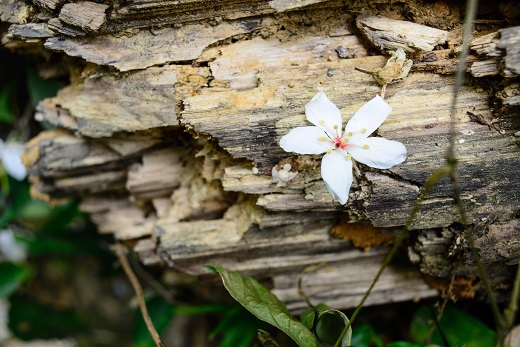The flower of the tung tree occupies an important place in Hakka culture. Many Hakka in Taiwan once depended on the tree’s seed oil for income. Tung trees were first brought to Taiwan during the Japanese colonial♦ period and cultivated in the island’s hilly♦ regions near Hakka settlements♦. Glue-like and water-resistant, tung tree oil was in demand in furniture-making and boat-building. Cheaper synthetic♦ products would later replace its use in these industries, and the tree’s economic importance diminished. However, tung flower blossoms endure as a unique and essential symbol of Hakka culture, reflecting deep, heartfelt♦ gratitude towards the tung tree, the mountains, and nature.
Each spring, from mid-April until mid-May, Hakka people cherish, celebrate, and share their cultural heritage♦. As massive amounts of white flower petals♦ blanket the ground, the spectacular Tung Blossom Festival gets underway, bringing joy and renewal♦ to all. Since its inauguration♦ in 2002, the festivities♦ have grown from a one-day event to a month-long, island-wide celebration, with millions in attendance every year. According to tradition, the occasion is a sacrifice to the guardian spirits on behalf of the Hakka people and also on behalf of the flowers.
The main areas to see these flowers in bloom are in Miaoli and Taoyuan, and Dongshih in Taichung. These places are comprised of mountain trails that are not known for their accessibility. Not to worry. For those wishing to see the "May snow," as fallen tung blossoms are affectionately known, there are also numerous scenic trails and easy-access itineraries♦ practically island-wide.
Wander around the Hakka village of your choice, and don’t miss the festival highlight♦—sampling the sumptuous♦ culinary♦ treasures and refreshments♦! ---------------------------------------------
1. Which of the following is true regarding the historical and cultural importance of the tung tree among Hakka people?
(A) Hakka once farmed and sold the flowers of the tung tree.
(B) Hakka once sold tung tree seed oil.
(C) Hakka continue to grow tung trees.
(D) Hakka brought the tung tree to Taiwan.
--------------------------------------------- 2. Which of the following is NOT true about the Tung Blossom Festival?
(A) It takes place in April and May.
(B) The tradition includes a spiritual or religious aspect.
(C) The tradition dates back to the Japanese colonial period.
(D) It is attended by millions of people.
--------------------------------------------- 3. According to the third paragraph, what are possible drawbacks to certain flower-sighting areas?
(A) Some of them present minor inconveniences that should be ignored.
(B) Since the main flower-viewing locations are far from Taipei, they are not so convenient.
(C) Many of the main flower-viewing areas are located on private property.
(D) Poor access to mountain trails makes some choices less appealing.
--------------------------------------------- 4. What can most likely be inferred from the last paragraph?
(A) Delicious dishes and tasty treats are available at the festival.
(B) Some Hakka villages do not prepare food for the event.
(C) Many Hakka villages are off-limits♦ to visitors.
(D) Most visitors to the festival prefer to forgo the food offerings.
 

|

